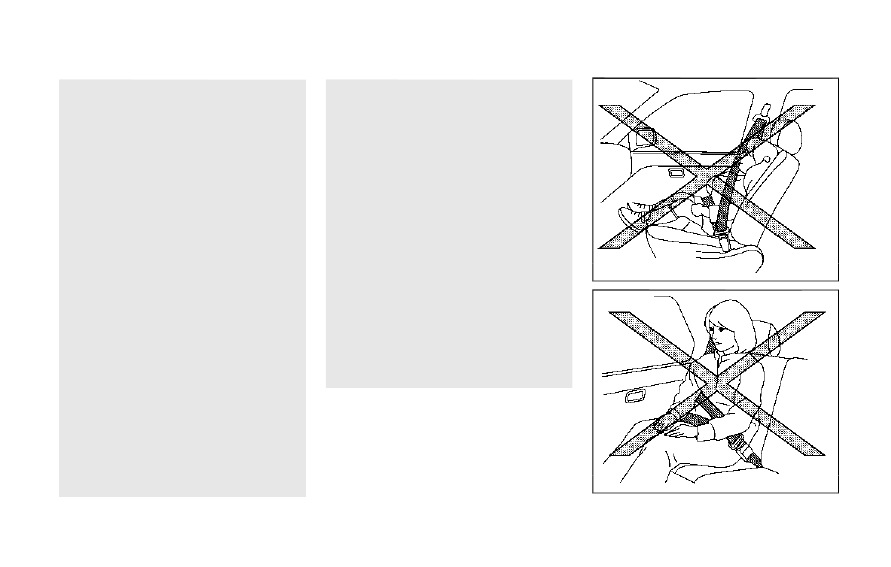Infiniti QX80 (2018 year). Manual - part 3

1-20
Safety — seats, seat belts and supplemental restraint system
. Do not wear the seat belt inside out
or twisted. Doing so may reduce its
effectiveness.
. Do not allow more than one person to
use the same seat belt.
. Never carry more people in the ve-
hicle than there are seat belts.
. If the seat belt warning light glows
continuously while the ignition is
turned ON with all doors closed and
all seat belts fastened, it may indicate
a malfunction in the system. Have the
system checked. It is recommended
you visit an INFINITI retailer for this
service.
. No changes should be made to the
seat belt system. For example, do not
modify the seat belt, add material or
install devices that may change the
seat belt routing or tension. Doing so
may affect the operation of the seat
belt system. Modifying or tampering
with the seat belt system may result
in serious personal injury.
. Once a seat belt pretensioner has
activated, it cannot be reused and
must be replaced together with the
retractor. It is recommended you visit
an INFINITI retailer for this service.
. All seat belt assemblies, including
retractors and attaching hardware,
should be inspected after any colli-
sion. It is recommended you visit an
INFINITI retailer for this service.
INFINITI recommends that all seat
belt assemblies in use during a colli-
sion be replaced unless the collision
was minor and the belts show no
damage and continue to operate
properly. Seat belt assemblies not in
use during a collision should also be
inspected and replaced if either da-
mage or improper operation is noted.
. All child restraints and attaching
hardware should be inspected after
any collision. Always follow the re-
straint manufacturer’s inspection in-
s t r u c t i o n s a n d r e p l a c e m e n t
recommendations. The child re-
straints should be replaced if they
are damaged.
SSS0016
SSS0014